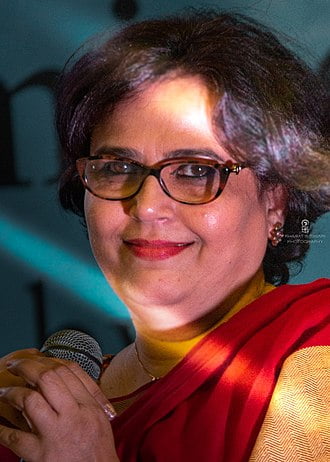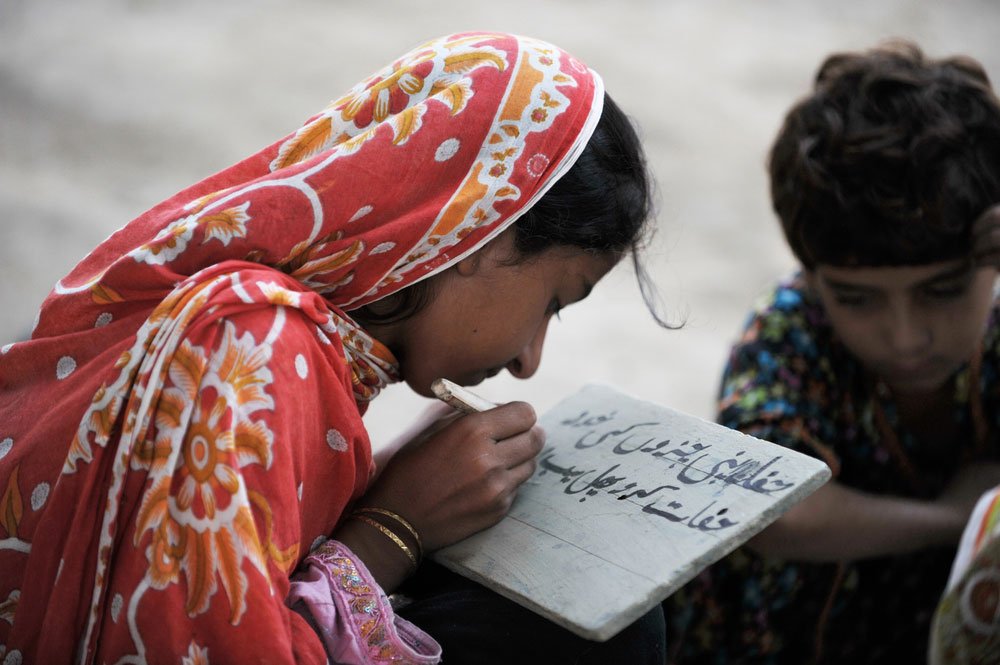In the introduction of her new book on Urdu poetry in South Asia titled “Love in the Time of Hate: In the Mirror of Urdu” which Simon and Schuster published on 17th May, author Rakshanda Jalil writes:
“There are love jihads and there are love jihads.” Alluding to the Hindutva myth of Muslim men luring and converting Hindu women through promises of love, Jalil reclaims the hate-filled term. She turns it into something beautiful and revolutionary.
The Arabic word jihad, separated from the bigoted political connotations associated with it, means a Holy War, or a good fight. Jalil’s text poses the question: what better weapon in the right fight than the gentlest of all ammunition: love?
“Love in the Time of Hate: In the Mirror of Urdu” is a testament to the rich history of Urdu literary culture in South Asia: including shayari, nazms, ghazals and all forms of Urdu poetry. In our hate-imbued times, there arises an urgent need for co-mingling- of cultures, thoughts, languages, ideas, and most importantly, people. Urdu poetry, in Jalil’s text, becomes the vessel for that amalgamation of communal cultures, leading to a rich unity in diversity.
Love in the Time of Hate: In the Mirror of Urdu tells the story of India, that is Bharat, that is Hindustan, through the mirror of Urdu, which is a marker of the Ganga-Yamuni tehzeeb, a beautiful harmony derived from unity.
Urdu: the essence of India
From the Adivasis, the Indo-Aryans, the Dravidians and the Mughal emperors to the diverse communities residing within India like the Parsis, Jews, Jains, Bohri Muslims and many more, it is India’s diversity and plurality that makes it truly a melting pot of cultures. In that sense, Urdu is an embodiment of this subcontinent. It is a language that is borne of many languages, taking bits and pieces from every culture and creating a unique, harmonious blend. The rich syllables and the mellifluous sounding words of Urdu add to its charm.

Though Urdu is mostly spoken and associated with North India, the poetry produced in this language covers diverse topics- from the political upheaval in Afghanistan and hijab laws in Iran to the sweetness of Bengal and the Liberation of Bangladesh.
Urdu poetry, as explained by Rakshanda Jalil has always been syncretic, praising Krishna and Allah in the same breath. This amalgamation of two extremely different forms of religiosity- one monotheistic and one polymorphic- is only visible in this part of the world.
While Hindutva speaks of homogeneity, Urdu speaks of a pluralistic India with multiple worldviews. While Hindutva harps on about an exclusively saffron past, Urdu talks about the rich history of India and the rulers who had befriended and assimilated into the open, dynamic culture of India.
Before Ram became a symbol of masculinist Hindutva political power, he was given the epithet of Mard-e-Kaamil or the perfect man. Rakshanda Jalil writes how after the Babri Masjid demolition, poets invoked the figure of Ram to protest against communalism. Kaifi Azmi writes in his poem “Doosra Banwas” (The Second Exile)
“Ram banbaas se jab lautke ghar mein aaye
Yaad jangal bahut aaya jo nagar mein aaye
Raqs-e-deewaangi aangan mein jo dekha hoga
Chhe December ko Shri Ram ne socha hoga
Itne deewaane kahan se mire ghar mein aaye“
(When Ram returned home from exile in the forest
He remembered the jungles when he came to the city
When he saw the dance of madness in his courtyard
On 6th December Shri Ram would have wondered
Where have all these madmen come from into my home)
Urdu: the target of hindutva Hate
Writing against the grain of Hindutva hate, Rakshanda Jalil holds up a mirror to our society through Urdu poetry. However, of late, saffron nationalists have imposed the Hindi language on the diverse population of our nation. Urdu with its Persian, Turkish and Arabic roots, written in the Nashtalik script has been deemed the language of the Muslim or the cultural “other.”

In 2021, clothing brand Fabindia was forced to withdraw an advertisement with an Urdu campaigning title after BJP leaders protested against it. Seen as a foreign import, Urdu has been considered not Indian (read Hindu) enough, with politicians being barred from taking oaths in Urdu, artists being stopped from making Urdu graffiti and removal of Urdu terms from school textbooks.
This bigoted Hindutva hate towards Urdu originates from the fact that Urdu goes against everything that Hindutva preaches and practises. While Hindutva speaks of homogeneity, Urdu speaks of a pluralistic India with multiple worldviews. While Hindutva harps on about an exclusively saffron past, Urdu talks about the rich history of India and the rulers who had befriended and assimilated into the open, dynamic culture of India.
Writing a treatise on Urdu poetry at this time is a brave political act, but one that is ultimately borne out of love, for the nation and its people.
Interweaving politics, people, passions and places
In Love in the Time of Hate: In the Mirror of Urdu, diverse ideas are united through the common thread of Urdu poetry. The book is divided into four broad sections: Politics, which charts political and historical events in India; People, which discusses Gods, prophets and great men and women; Passions which talks of festivals, food, seasons and love among other human passions and Places which narrates the stories of nations and regions.
The author has included current affairs, including the COVID 19 pandemic, the Hijab ban in Karnataka and the Ram Mandir Inauguration event in the text and connected them to Urdu and poetry. For example, in the chapter on the COVID 19 pandemic titled Saanson ki Mala…, Rakshanda Jalil has used the metaphor of breathing in Urdu poetry to comment on the pandemic.
By connecting our times to the evergreen and ever-giving cornucopia of Urdu poetry, Jalil has commented on our precarious political situation poignantly.
The mehfil that is India
In all its diversity and variety, India is a metaphoric mehfil, a party where people come together to celebrate culture. The current political dispensation which is built on the bricks of hate, has been trying very hard to negate this very simple truth.
Rakshanda Jalil’s Love in the Time of Hate: In the Mirror of Urdu is a reminder of what India really stands for. The book reaffirms the idea or the essence of our nation, which is and always has been pluralistic and polyphonic. Returning to the body of poetic work in the Urdu language, Rakshanda Jalil paints the true picture of our country, upholding the tenets of “unity in diversity” and shows us what our nation has always stood for, one shayari at a time.
About the author(s)
Ananya Ray has completed her Masters in English from Jadavpur University, Kolkata, India. A published poet, intersectional activist and academic author, she has a keen interest in gender, politics and Postcolonialism.





